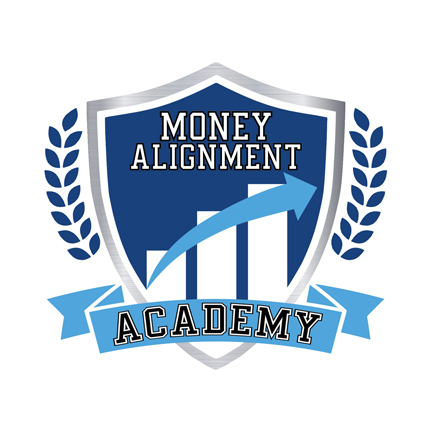Daniel Kahneman, a Psychologist, won the Nobel Prize in Economics. He became fascinated by why people make personal finance and investing decisions, and it motivated him to focus his research on it. After releasing his results, he made this damning assessment of the financial industry; he said it’s an industry “built largely on an illusion of skill.”
I loved it the first time I read it, and I still love it today. I consider myself to be a bit of an outsider in the financial world.
Here’s where I’m coming from
For literally 20 years, I’ve been helping companies and their employees successfully use 401(k)s. They have named me to Investopedia’s list of the top 100 Financial Advisors in the country for the past three years in a row (no big deal). I share that to simply show I know what I’m talking about.
When I started, I was shocked by how confusing everything related to 401(k)s was. It was unclear and hard to find out how much things cost, who was getting paid, and by who.
Things were unnecessarily complex and confusing. Way too much jargon with a massive lack of transparency.
The good news is, things have changed a lot.
Today, while the industry is still full of jargon and “experts,” the fees and expenses are now transparent and easy to understand; as long as you’re working with companies who value those things.
The bad news is, roughly half of small businesses in America don’t currently offer a 401(k).
It’s my goal to break down everything you need to know into understandable and actionable information so you can implement a 401(k) at your company and your employees can be on track to achieve financial independence.
Before I go any further, this is not the definitive guide to 401(k)s, it’s simply my thoughts on highlights for you to be aware of.
Let’s go!
Terms to know
No sooner do I talk about the danger of jargon, do I talk about understanding terms… unbelievable. Here are some terms to know.
Investment management. These are the investment options inside of your 401(k). You’ll be tasked with deciding on the providers and strategies to select. The good news is this is very streamlined, and there are plenty of examples to follow.
Custodial services. The money has to be held somewhere, and the custodian is the company that does it.
Fiduciary services. “Fiduciary” may be the most overused term in the financial world over the past several years. There are three key types to be aware of. 3(16) deals with ensuring the movement of money is done correctly, from payroll to participant accounts. 3(21) and 3(38) deal with whom is liable for the investments inside of the plan. More on this later.
Compliance testing. There are rules around how much money can be contributed to accounts by the company and by participants.
Recordkeeping. Just as it sounds, someone has to be in charge of making sure all the money is in the right places.
Plan design
While there are similarities between 401(k)s, each plan is also unique and you’ll need to decide on what you want your plan to look like. Here are a couple of key areas to consider.
Match or no match. Deciding whether you’re going to make contributions to your employees’ accounts is an important decision. There are many benefits like tax deductions and good will, and there are many formulas for matching your employees contributions. You can also start your 401(k) without a match and add one later.
Safe harbor. This is a popular 401(k) that will allow the owner to contribute the maximum amount to their plan, even if their employees aren’t contributing the maximum amount to theirs. This goes back to the “compliance testing” mentioned earlier.
Automatic features. Motivating good savings habits comes in many forms, and automatic features have proven to be one of the most successful ways to do that. Automatically enrolling employees into the plan (they can opt out if they want) has proven to be a great tool for increasing participation in 401(k) plans.
Proper management
401(k) plan “governance” is also an area where “experts” like to focus their attention. Here’s what you need to do.
Have a process. You need to adopt processes for managing your plan (whichever provider you select will undoubtedly be able to provide those for you). Key elements to your process will be an Investment Policy Statement which lays out how you manage the investments in your 401(k).
An Education Policy Statement which lays out how you’re going to educate your employees on how the plan works. You’ll also create a 401(k) committee and establish bylaws for running it. You’ll then convene that committee and review your plan throughout the year. It sounds like a lot, but again, the provider you select will provide you with templates for these things.
Follow and document. Once you’ve got your processes in place, you’ll simply follow them and document that you’ve done so. Easy peasy.
Provider selection
There’s no doubt there’s a lot going on with 401(k) plans. There’s investment management, custodial services, fiduciary services, compliance testing, recordkeeping and government filing; all the things we talked about earlier.
I don’t know about you, but that sounds like the whole complexity thing I was talking about earlier…If you said that, you’d be right.
Imagine going and trying to source all of those one at a time; that sounds terrible.
Here’s the good news, a whole new breed of financial technology (Fintech) companies have come online to address this need. Just as technology has disrupted many aspects of our lives, it has also done that with our financial lives. Think about companies like Robinhood who are turning the world of investing on its head.
There are a handful of high-quality Fintech providers such as Guideline, Human Interest and Vestwell that have really simplified things and have created a one-stop-shop for starting a 401(k).
Many of them provide fiduciary relief as well. Guideline, for example, provides 3(16) as well as 3(38) fiduciary services as part of their service. That means they’re taking responsibility for the movement of the money and the investment management; leaving you with a lot less to worry about.
Even better, they do it for a stated price.
I love them. The legacy providers (companies that have been around forever) don’t.
Ease of use
Payroll integration. It used to be difficult for a payroll company to “talk” with a 401(k) provider. These days, most of the integration between parties is fairly seamless. If you’re processing your own payroll, there may be some extra steps, but providers are accustomed to handling that as well.
Professional advisors. Here comes the advertisement for our Academy Partners (professionals we partner with when our readers need help). An advisor acts as an intermediary between you and the 401(k) provider. While most 401(k) providers are getting better at customer service and solving problems, working with a professional 401(k) advisor can make life a lot easier.
Will technology replace humans (advisors)? Maybe one day, but not yet. The perfect result is a combination of the two. Take advantage of the clear benefits technology provides (cost, simplicity) but also use a professional advisor to ensure ease of use.
Employee support
The reason I do what I do (and I imagine a big reason you’re reading this) is to help employees save money and become financially successful. Financial literacy and or financial wellness are buzz words simply meaning “help people understand how their money works.” This is where my passion lies.
A 401(k) advisor helps in rolling out the new plan to employees. They help explain how it works, how it integrates into an employee’s overall financial world, answer questions and helps catalyze participation.
For any employee benefit to be a success, ongoing education and support is necessary. A 401(k) advisor provides this in a variety of ways and will tailor the program to fit your unique workforce and culture.
They will also work with you and your HR professional(s) to integrate the 401(k) into your overall benefits package.
Getting started
A conversation about your company and what you’re hoping to accomplish is the starting point.
You can go directly to a 401(k) provider, or you can work with a 401(k) advisor (again, I’m biased, but the cost of working with an advisor is far outweighed by the value they can provide you).
If you’d like to chat about 401(k) options, we’d be thrilled to do it.
Check out our financial wellness platform, Money Alignment Academy as well.
We’ve got three free courses as well: Our Goals Course, Values Course, and our Get Out of Debt course.
Connect with one of our Certified Partners to get any question answered.
Here are some LifeBlood podcast episodes on 401(k)
- Maximizing your 401k with Sarah Holden and Tina Kilroy
- Starting a 401(k) with Michael Armsby
- Disrupting 401(k)’s with Kevin Busque
- ESG in 401(k)s with Bonnie Treichel
- Your 401(k) Account with Harris Nydick
- Your 401(k) and Your Future with Alex Assaley
- Modernizing 401(k)s with Roger Lee
- FinTech and 401(k)’s with Barbara Friedberg
- Understanding Your 401(k) with Jeanne Fisher
- Maximizing Your 401(k) with Aaron Pottichen
- Tech’s Influence on 401(k)’s with Scott Buffington
- 401(k) Retirement Plans with JD Carlson
Stay up to date by getting our monthly updates.
Good luck and thanks for being a leader and providing this important benefit to your people.

